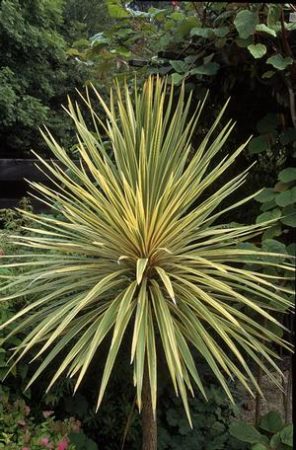Post category: Choosing trees and shrubs
Size
Find out the eventual size of a tree or shrub before planting. It is a common mistake use trees or shrubs that are too large for the space available and these have to be removed or spoiled by heavy pruning. Use the larger plants to provide the framework – the backbone – of the planting and the smaller ones to complement and contrast with these larger plants. Generally, the tall plants are put to the back, the smaller ones to the front. An occasional exception might be made in order to provide contrast.

A variety of shapes used to good effect
Shape
Every tree and shrub has its individual shape. The main types of shape are columnar, conical, round, flat or ‘weeping’ and there are innumerable variations. A good variety of these tree shapes should be planted to provide interest and good contrasts. There is often plenty of rounded shapes, but not enough of the others, especially upright or conical kinds. Many garden trees are grown as standards, with a clear stem of up to 2 metres, which allows planting beneath.
Colour
Trees and shrubs offer a wonderful panoply of colour, provided by leaves, flowers, berries, bark and even buds. Flower colour is usually taken into account, but foliage colour, though at least as important, is often ignored and the other sources of tree colour are hardly even recognised. Aim to provide variety of foliage colour through spring, summer, autumn and winter by choosing trees and shrubs that change colour with the seasons. Those that vary from the standard green – yellow, bronze, red, purple, blue and grey foliage plants – deserve special consideration.
Texture
Texture is a feature of trees and shrubs that is less obvious than other aspects, and its value is not widely appreciated. The distinctive size, shape and density of foliage, and the way the plant holds its branch framework, define texture. For example, Japanese maple is soft and ferny; horse chestnut is bold and strong; Scots pine is rugged and untamed. Choose plants for variety of texture, which is every bit as important as shape or colour.

Cordyline australis ‘Albertii’
A large garden, greater than 1,000 square metres, can accommodate a small number of large trees and some smaller ones. Not nearly enough large gardens have good-sized trees, even one or two, although there is often plenty of space. A very wide choice of trees and shrubs is available to suit any garden site.


